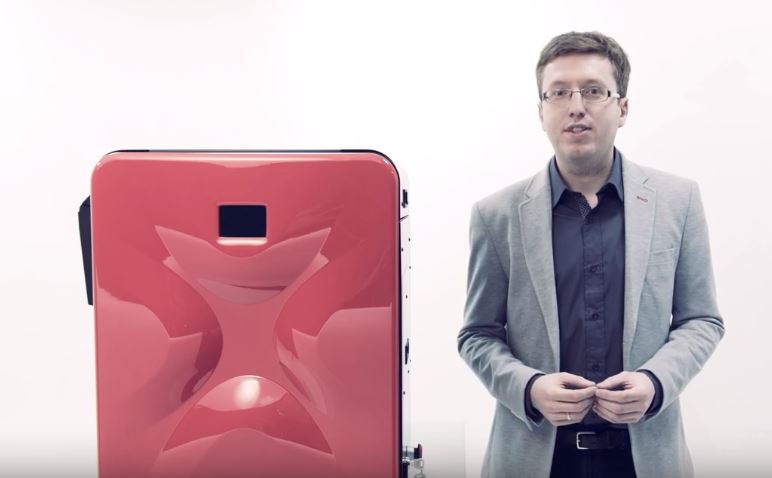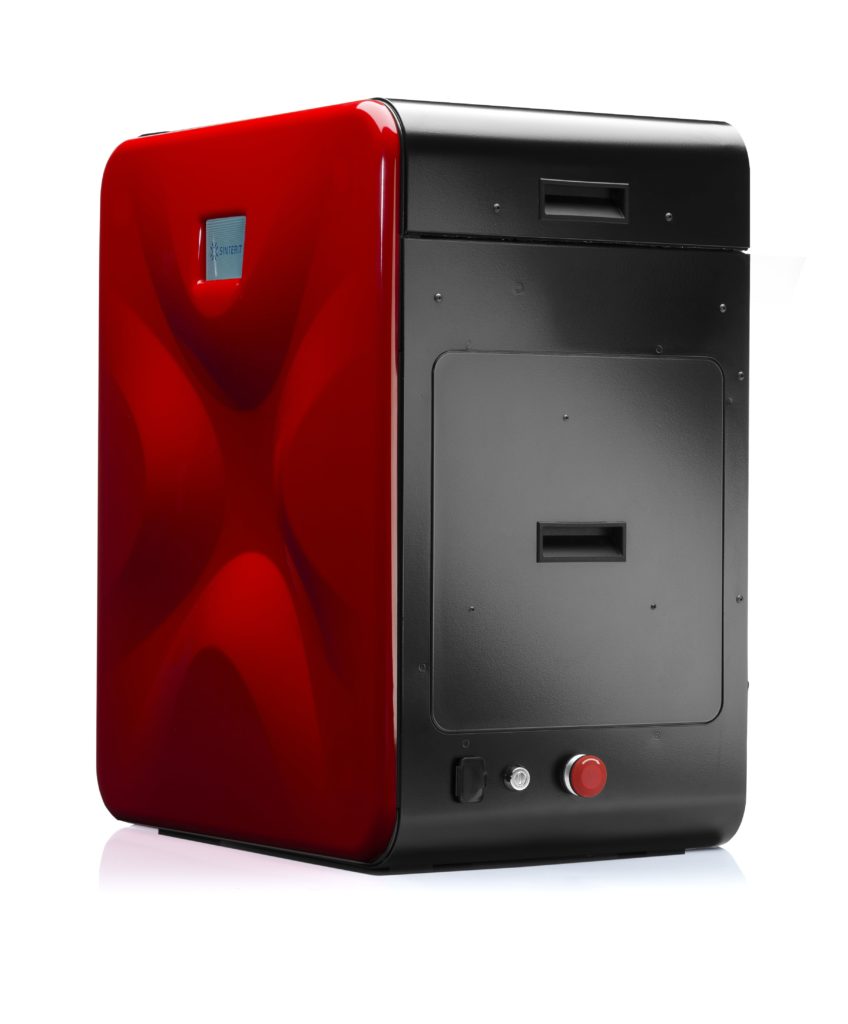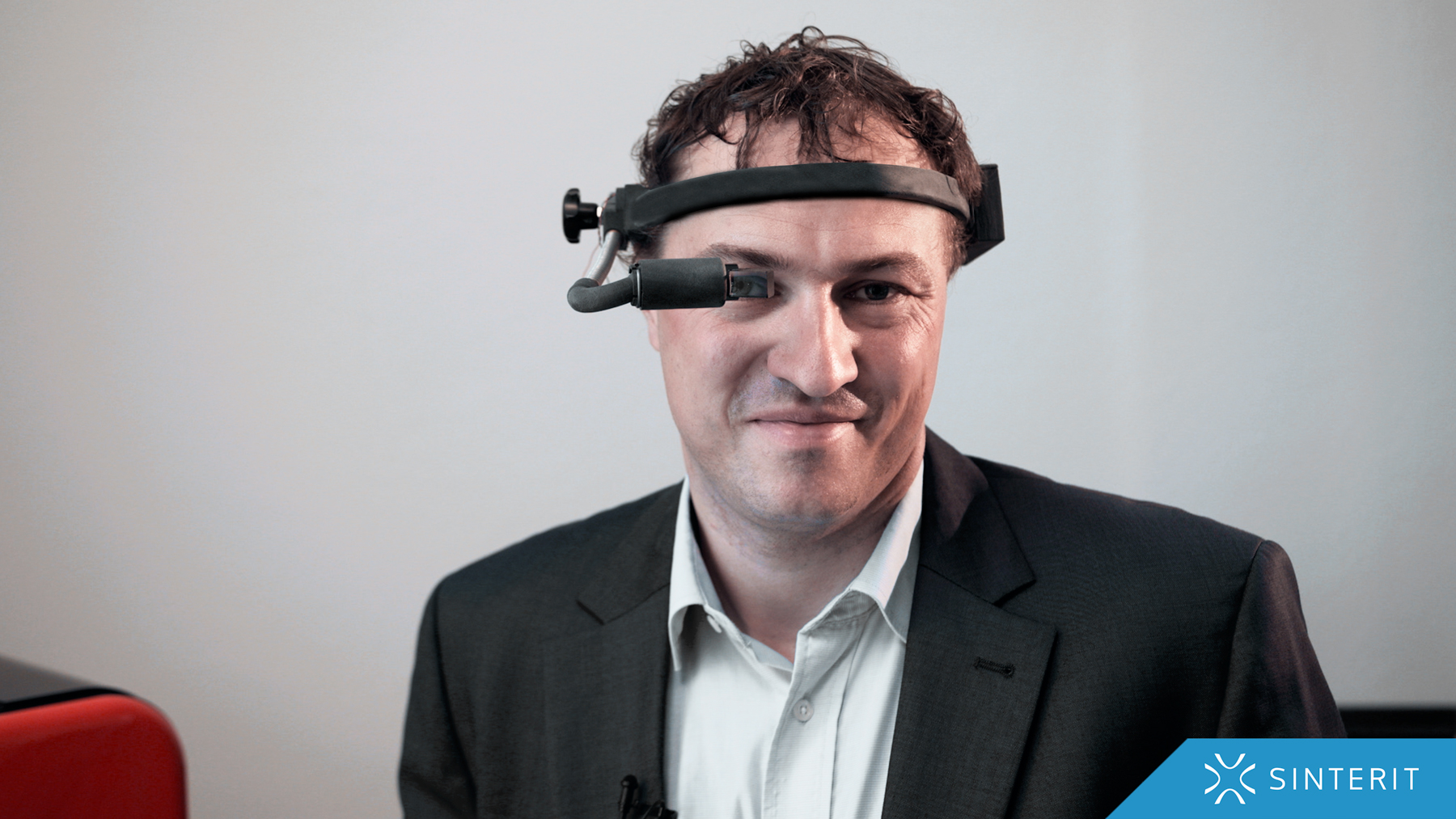Sinterit, manufacturer of SLS 3D printers, enters the market with Sinterit Lisa.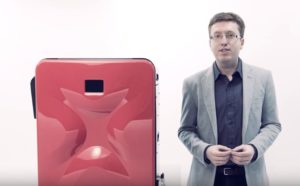
Recognized for its “affordable” price, the printer firstly attracts by its design. With a deep experience in Business Development and Marketing, Konrad Głowacki, Co-founder of Sinterit is software engineer by training. Beyond the attractive design of their flagship product, he explains today what gave life to Sinterit.
How did you come to the creation of Sinterit?
My interest in 3D printing started several years ago. I built my own RepRap machine, a Prusa hybrid … and I realized that there is a lot of potential in this industry on the one hand, on the other hand, that there are a lot of limitations of FDM technology. That’s why our current CEO, Paweł Szczurek and I started thinking about what we could do ourselves and we realized that there are SLA and SLS printers that are extremely expensive but do not have a lot of limitations …
The first idea was not to create a company, it was more about software and making a good device… A few moments later, we used the knowledge acquired in SLS to provide an appropriate service to consumers. The main idea was to change the “pricing point” and to push forward SLS technology as well as FDM. After the promising results of the tests obtained in September 2013, we increased the number of prototypes in 2014 and when Michał Grzymała-Moszczyński, our third Co-founder, joined us, Sinterit really took off.
What makes your flagship product Sinterit Lisa different from other 3D printers?
Who is your primary target?
The primary market includes small and medium-sized manufacturing and design companies. Indeed, they need to get better and faster prototypes, and to be able to achieve small scale production with good materials.
Also, there is a lot of interest from research and educational institutions, as well as big companies. SLS is interesting for industries such as automotive, aerospace etc….
Our primary goal is to make our customers faster and more innovative, thus helping them to get more customers and better products.
The market which presents the highest demand?
Currently, the European market: France, Germany…which are also the main drivers of this technology.
We see a potential and interest in other continents but currently Europe presents the highest demand.
You support a great number of clients in their projects, tell us about 2 of them which were really challenging for the company.
Every customer is challenging for the company.
One challenge was to manufacture an exoskeleton arm. Made in collaboration with the 3D designer Bartłomiej Gaczorek, the exoskeleton arm enables a kid who suffered from SMA (Spinal Muscular Atrophy) a neuromuscular disease that affects nerves, to do the things he loves the most: move his hands, draw or simply play.
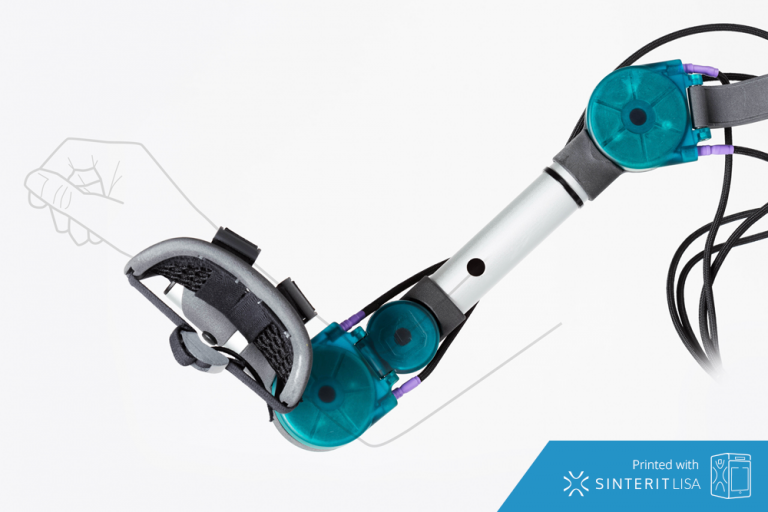 Another project was realized in collaboration with Professor Rigo Herold from Germany. We manufactured AR glasses. The issue is that the standard size of the eyepiece does not always work in the industry. The requirements were high – the rims had to be lightweight but quite precise, to be able to set all the necessary elements in. Resistance to high temperatures and durability, were also important factors, especially in the case of people exposed to harmful substances hence the use of 3D Printing, which happens to be the best solution. It is an example of customized production that happens to be sustainable. The testing on materials, the production needed to be customized…it was crucially required.
Another project was realized in collaboration with Professor Rigo Herold from Germany. We manufactured AR glasses. The issue is that the standard size of the eyepiece does not always work in the industry. The requirements were high – the rims had to be lightweight but quite precise, to be able to set all the necessary elements in. Resistance to high temperatures and durability, were also important factors, especially in the case of people exposed to harmful substances hence the use of 3D Printing, which happens to be the best solution. It is an example of customized production that happens to be sustainable. The testing on materials, the production needed to be customized…it was crucially required.
What triggers the launch of the 3D print design competition organized with My Mini Factory?
We made SLS technology available so that designers can create high quality projects, but also to motivate them to develop innovations. This contest was to show how to upgrade big projects from FDM to SLS technology, to use the potential of SLS technology, to show that there are no limitations on the form.
What do you think about the 3D printing market?
I don’t think it is already a mature market. It is still growing. The most challenging part is to find the proper technology for the proper application. To make this technology accessible to a worldwide audience is quite hard. And it’s hard to focus on that.
Its growth is seeing by all of us. Time and interest from companies are increasing as well. It will still take some time for the market to be mature, maybe 5 years… I can see that there are a lot of innovations that will happen soon…
What about Poland?
It is a market where we sell many 3D printers … certainly much less developed than Germany. Much more work remains to be done, but people better understand the possibilities of 3D printing.We also have a lot of 3D printers’ manufacturers, which shows that we are innovating a lot in the industry. What is interesting to note is “the kind of support that exists between us in the marketplace. ”
What are Sinterit’s prospects of development?
For now, the most important part concerns the different fields of application of the technology. This involves new materials as well as the vision of new customers … and it is very promising for the future. As for next year, new things are being prepared…#Staytuned
For further information about 3D Printing, follow us on our social networks and subscribe to our newsletter!
//pagead2.googlesyndication.com/pagead/js/adsbygoogle.js
(adsbygoogle = window.adsbygoogle || []).push({});



